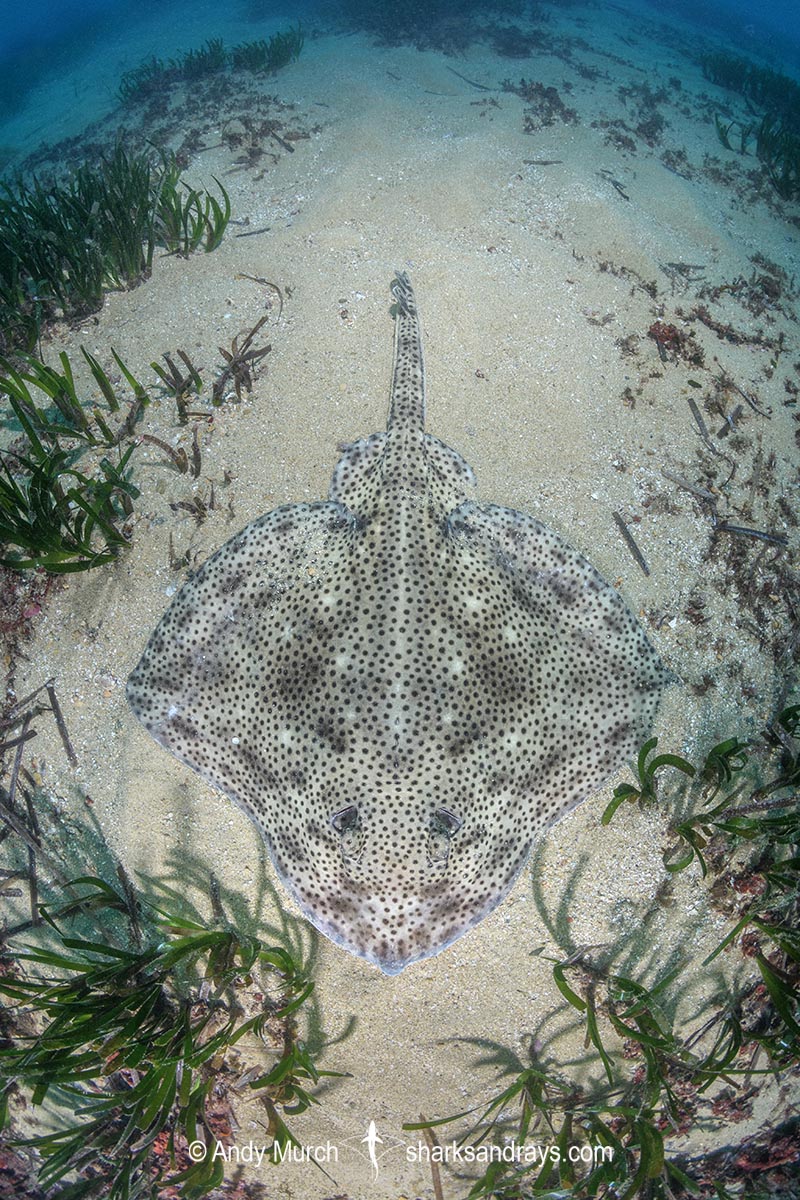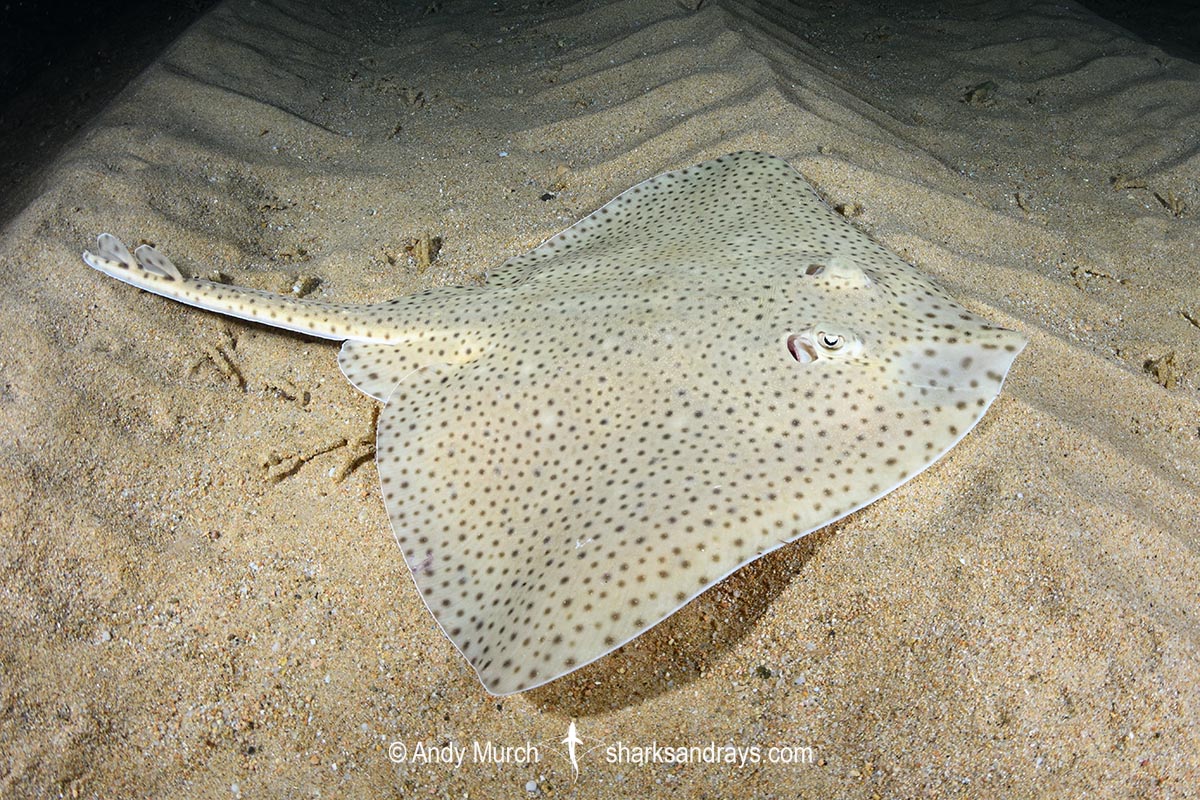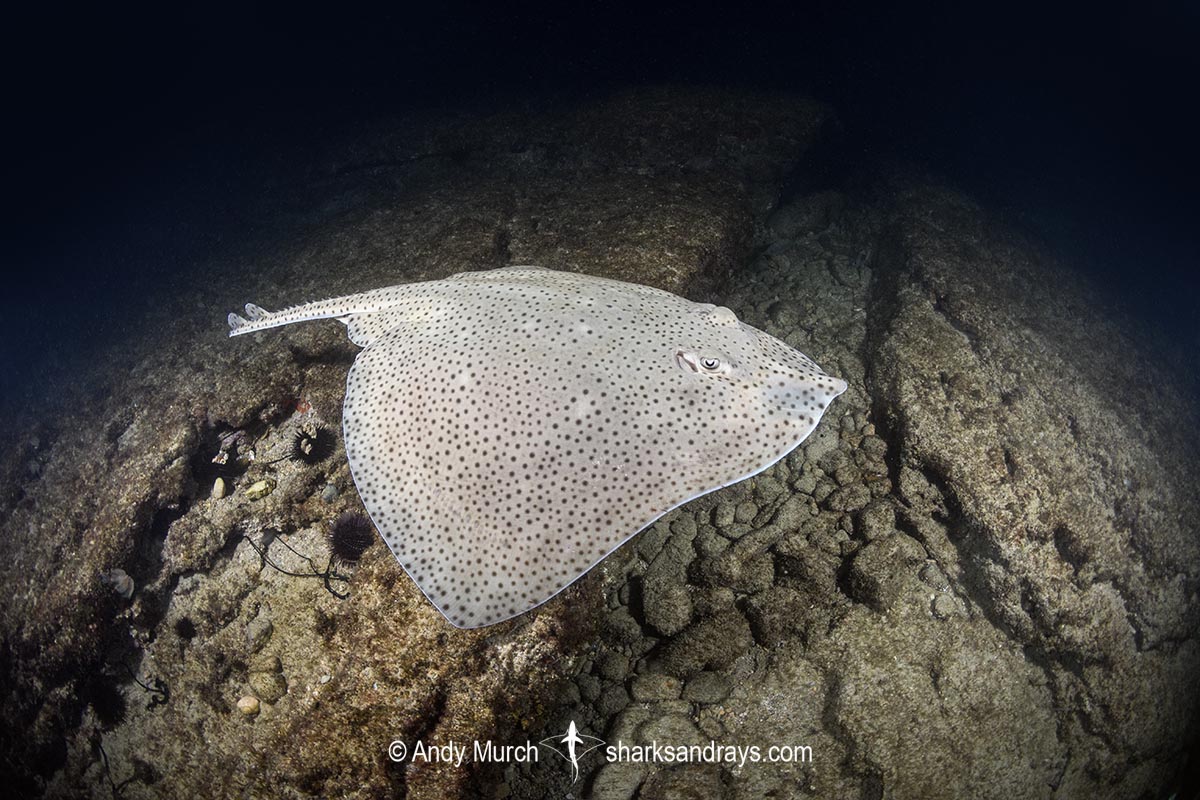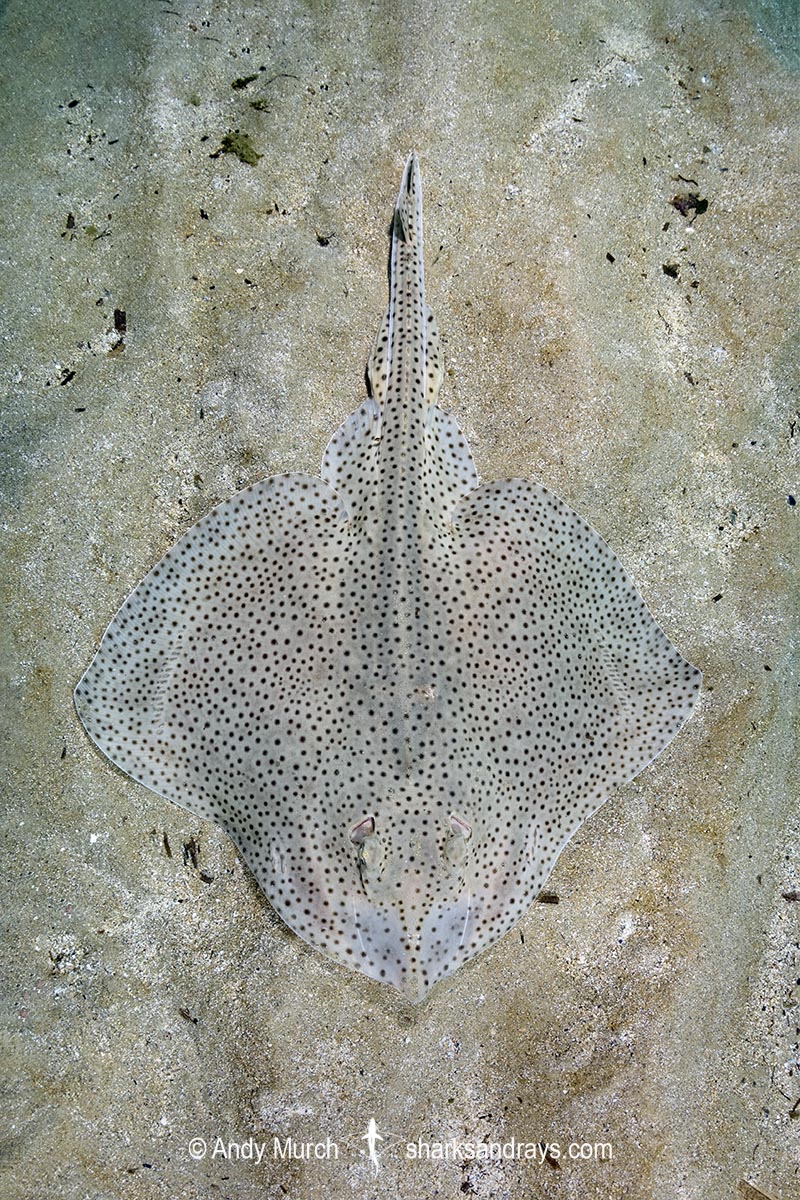Common name(s)
Blonde Skate, Blonde Ray (UK), Rajada Rosa (SP).
Binomial
Raja brachyura.
Synonyms
Raia blanda, Raia brachyura, Raja blanda.
Identification
A medium-sized skate with a kite-shaped disc. Disc width ~1.3 x disc length. Snout relatively long, anterior angle extremely obtuse or broadly rounded, with a protruding tip. Snout length ~2x interorbital space. Eyes small.
Anterior margins of pectoral fins weakly undulate. Pectoral apices obtusely angular. Disc covered in small prickles, mostly smooth in juveniles. Pre and post ocular thorns small. 40-45 midline thorns from nape to first dorsal; discontinuous in adult males. One interdorsal midline thorn. Row of small lateral thorns along sides of tail. Pelvic fins fairly large and weakly notched. Tail narrow and relatively long. Dorsal fins well separated, with rounded margins.
Colour
Dorsum yellowish to pale grey with 4-5 pairs of paler orbit sized spots. Adults may also have large dusky blotches. Base colour overlaid with many small black spots that extend right to the disc margins, along tail, and onto dorsal fins. Ventrum pale.
Size
Maximum length ~120cm. Egg case length 8-12cm.

Conservation Status
NEAR THREATENED
Skate catch data from the Mediterranean Sea and Northeast Atlantic often lumps rajidae species together, but the little data that does exist indicates that blonde skates have significantly declined. Historically more common in the Atlantic.

Habitat
Warm-temperate to temperate seas. Demersal on sand and gravel substrates. From shallow bays to 300m and possibly to 900m, but mainly shallower than 150m.
Distribution
Recorded from Norway to Morocco in the eastern Atlantic. Also in the western half of the Mediterranean from Spain to Algeria and Italy.
Reproduction
Oviparous. Females produce about 30 egg cases per year between February and August. Egg cases are 8-12cm in length.
Diet
Diet consisted of benthic invertebrates and fishes.
Behavior
Nocturnal. In the Mediterranean, blonde skates move into shallow water in the winter.
Reaction to divers
Fairly easy to approach. Initially remains motionless even when uncovered. More likely to bolt when encountered during the day.
Diving logistics
During the cooler months (November to May) blonde skates are easy to see on night shore dives in Tossa Del Mar; specifically on the south side of the islands at the north end of Tossa beach. In January, I encountered around a dozen blonde skates in 2-4m just off the beach. Water temp was 14ºC.
Blonde skates can also be seen with some frequency during night dives on the south coast of the UK at Chesil Beach and various other sandy spots in the area.
What’s new
View our full list of updates
Similar species
Mediterranean Starry Skate (Raja asterias)
Distinguished by more pointed snout, thinner tail, and smaller, less distinct spots.
Spotted Skate (Raja montagui)
Distinguished by slightly larger (eye sized) black spots that do not reach the disc margins.















